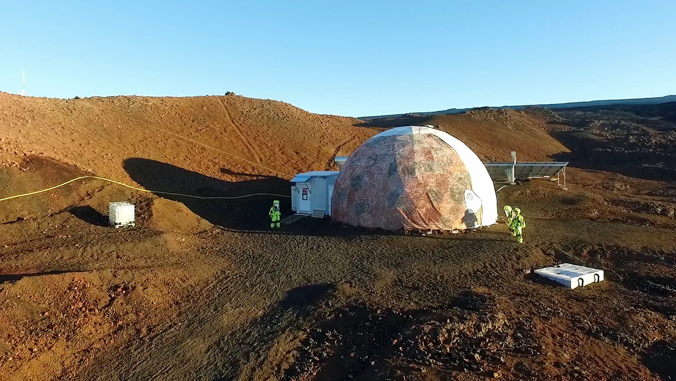
NASA has approved a restart of a $1-million grant to the University of Hawaiʻi at Mānoa’s Hawaiʻi Space Exploration Analog and Simulation (HI-SEAS) project. The research program funded by NASA has operated five long-duration planetary surface missions on the Mars-like flank of Mauna Loa to investigate crew composition and cohesion, since 2012.
HI-SEAS Mission VI was cancelled February 26, after one of the four crew members withdrew. A few days earlier, an accident involving a crew member triggered an institutional review by UH and NASA, which has since been completed, and the project has been approved to go forward.
The NASA Human Research Roadmap has a tight timeline to enable human exploration of the solar system. So, rather than conduct a new Mission VII, NASA asked the HI-SEAS team to rescope the final phase of the project to cover data mining over the six-year life of the project, and the development of a comprehensive database. NASA is providing additional funds for a more robust version of the data analysis than had already been planned for the end of the six HI-SEAS missions.
Principal Investigator and UH Mānoa Professor Kim Binsted said, “We’re excited to be able to put the 36 months’ worth of mission data we’ve collected over the past five years to good use: advancing human space exploration.”
Under the new grant, HI-SEAS will:
- Perform data mining of all HI-SEAS data (Missions I–V) related to team composition, including investigation of individual personalities, cognitive function and behavioral health changes, as all of these influence team performance.
- Develop a database of all HI-SEAS data funded by NASA to include data from HI-SEAS collaborators.
HI-SEAS investigators expect to complete the data collection and analysis by the end of 2019.

